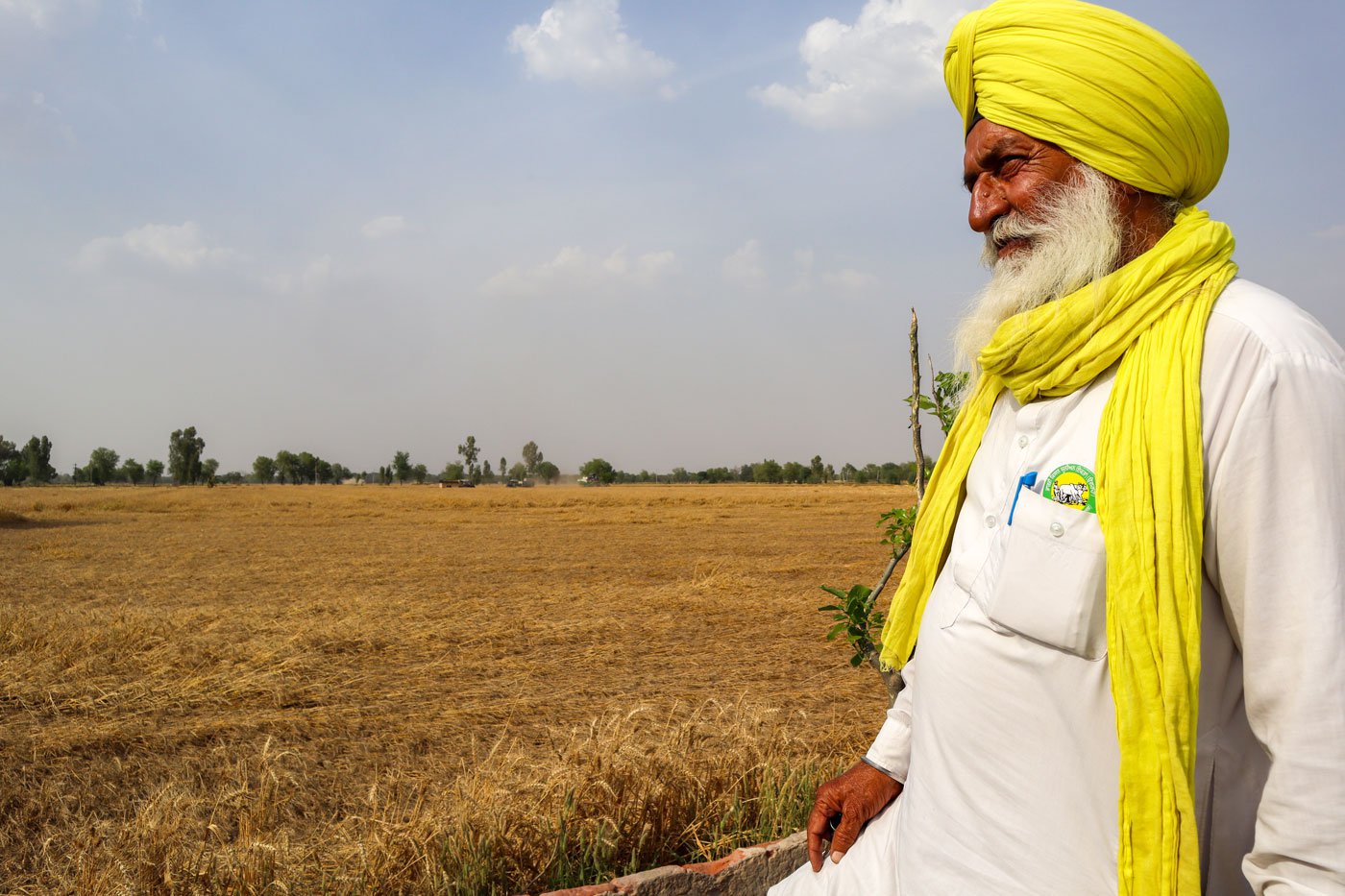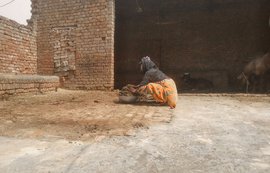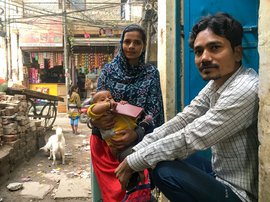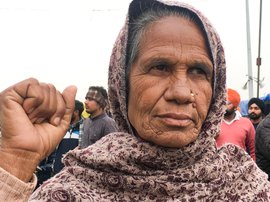Baldev Kaur, 70, picked her way through the remains of what was once the house her family had built on their farmland. Large cracks ran down the walls of the rooms that still stood.
“When the rain and hail slammed the roof, all of us spent the night wide awake. We were not sure what was happening,” said Baldev, a grey-haired woman dressed in a cotton salwar kameez , her dupatta covering her head. “Then in the morning, when water began leaking through the roof, we all ran outside . ”
As the sun came out, the house began to crumble, said Baldev’s younger daughter-in-law, Amandeep Kaur, 26. “ Sare paase ghar hi paat gaya. [The house shattered all around us],” said Baljinder Singh, 35, Baldev’s eldest son.
Baldev Kaur and her family of seven, including three children, had never witnessed such devastation before. Untimely rains in late March 2023 accompanied by a hailstorm left crops and homes destroyed in their village of Bhalaiana in Sri Muktsar Sahib district’s Gidderbaha block. This region of south-western Punjab shares a border with Rajasthan to the south and Haryana to the east.
As rain and hail continued over three days, Baljinder was a troubled man. They had borrowed Rs. 6.5 lakh from an arthiya (agricultural produce agent) to rent 10 acres of farmland in addition to the family-owned 5 acres. Without their wheat crop, there was neither sustenance for the family nor a way to repay the loan.
“The crop that had begun ripening was first ruined by the hailstorm. Then when it rained, the entire field was waterlogged for days. The water had nowhere to go, and the crop continued rotting in it,” Baljinder said. “Even now the crop lies flattened in the 15 acres of land,” Baljinder said in mid-April.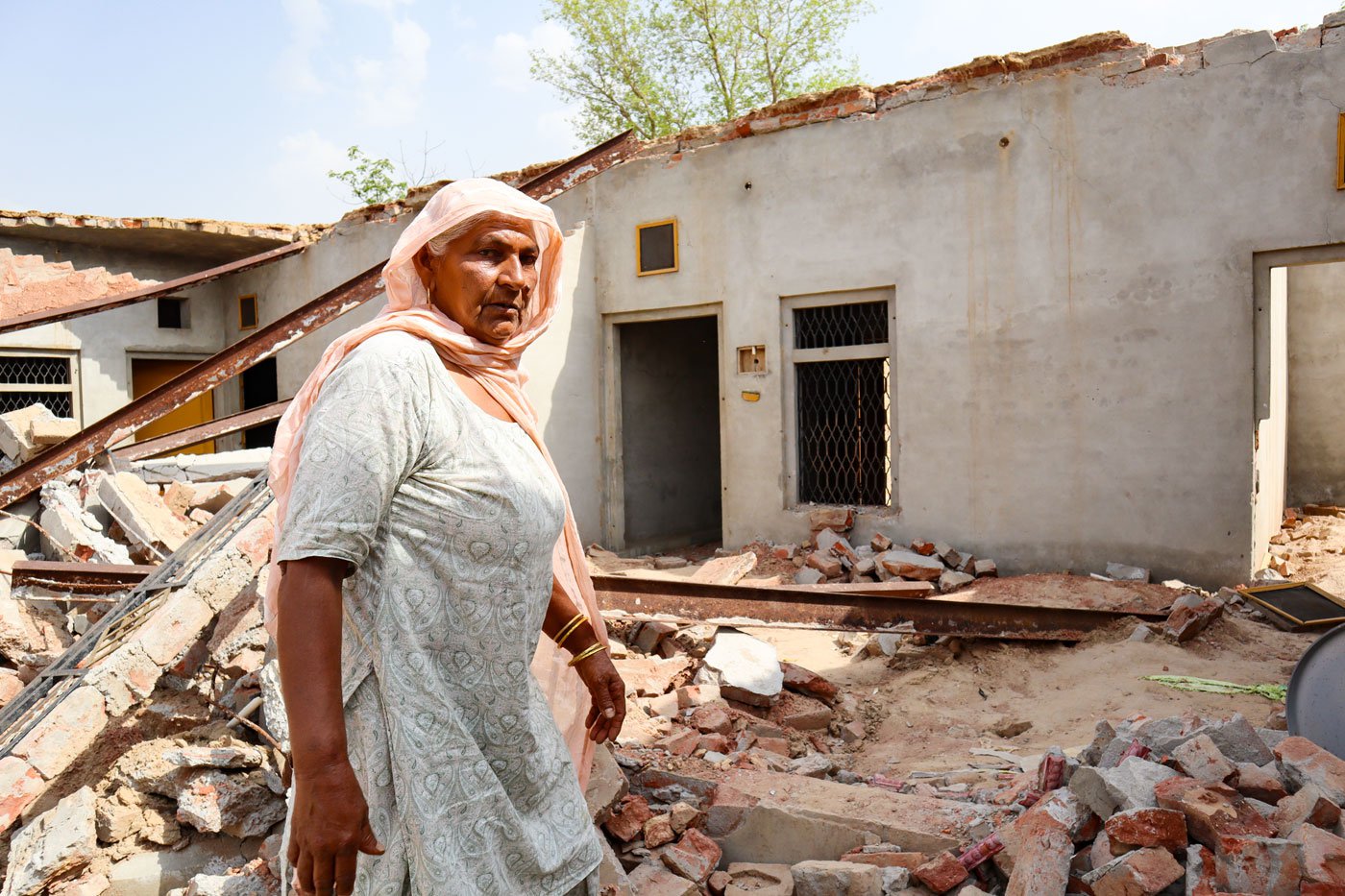
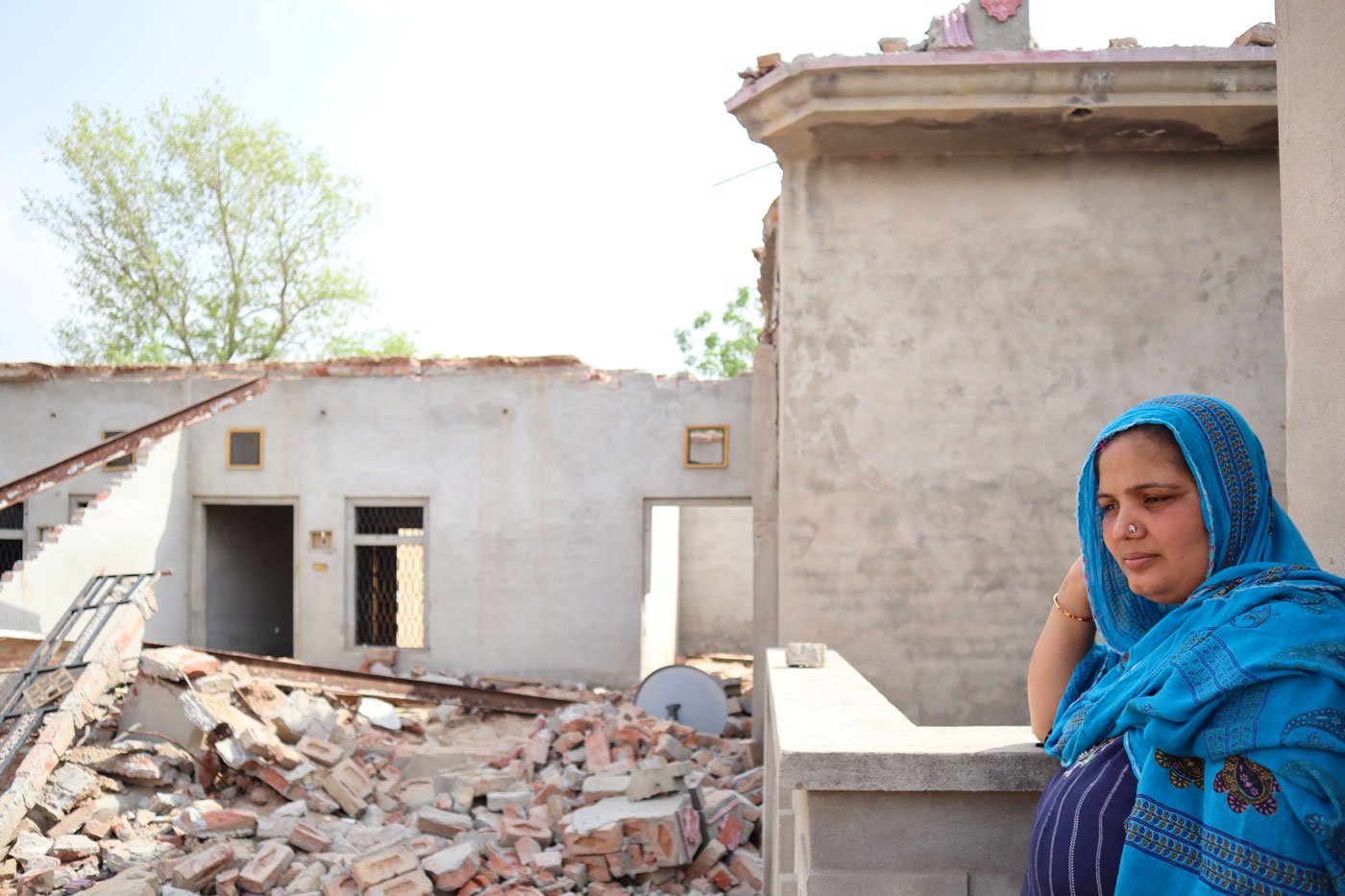
Left: Baldev Kaur standing amidst the remains of her home in Bhalaiana, Sri Muktsar Sahib district of Punjab. The house was built by her family on their farmland. Right: Baldev Kaur’s younger daughter-in-law Amandeep Kaur next to the shattered walls of the destroyed house
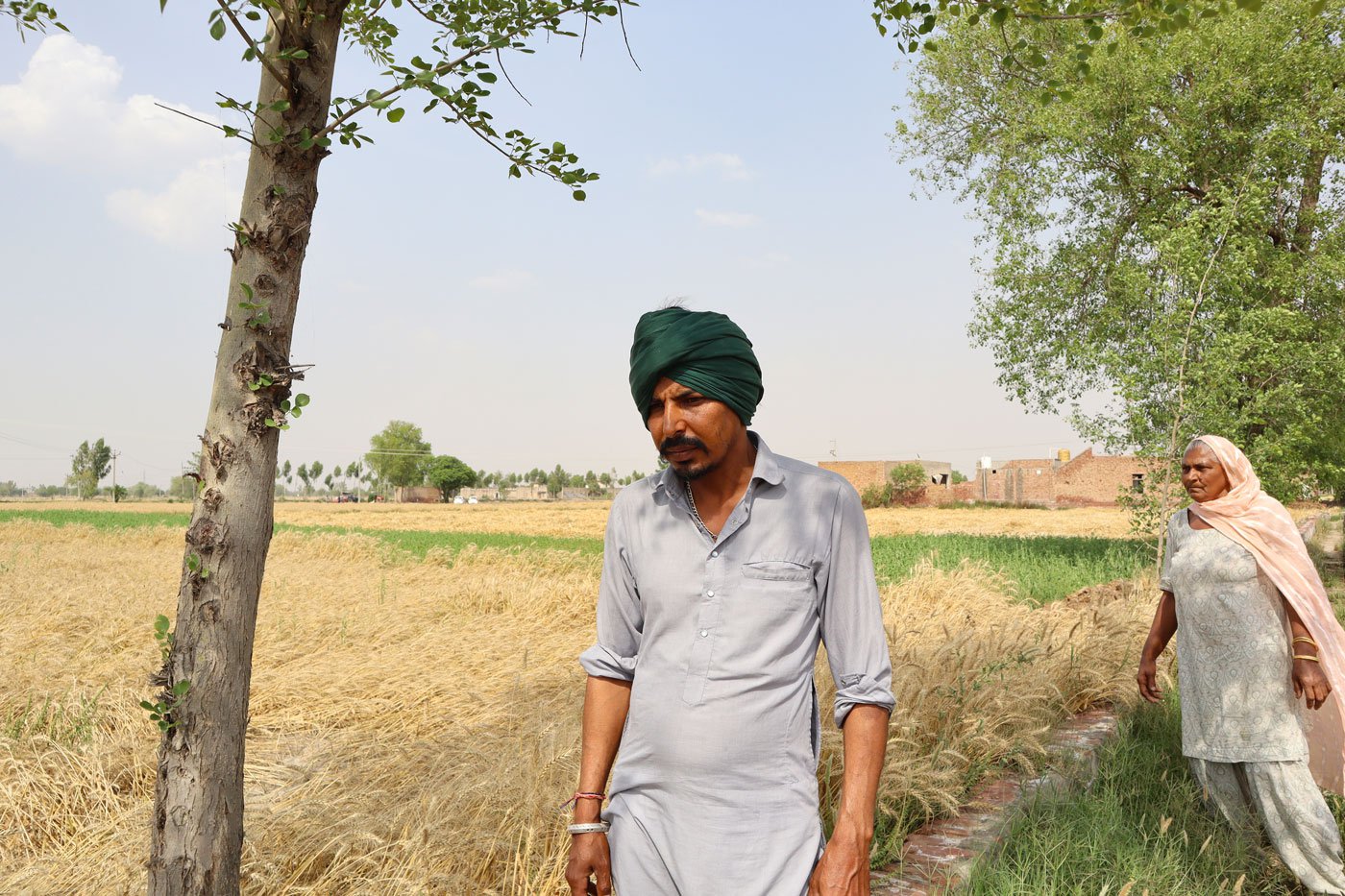
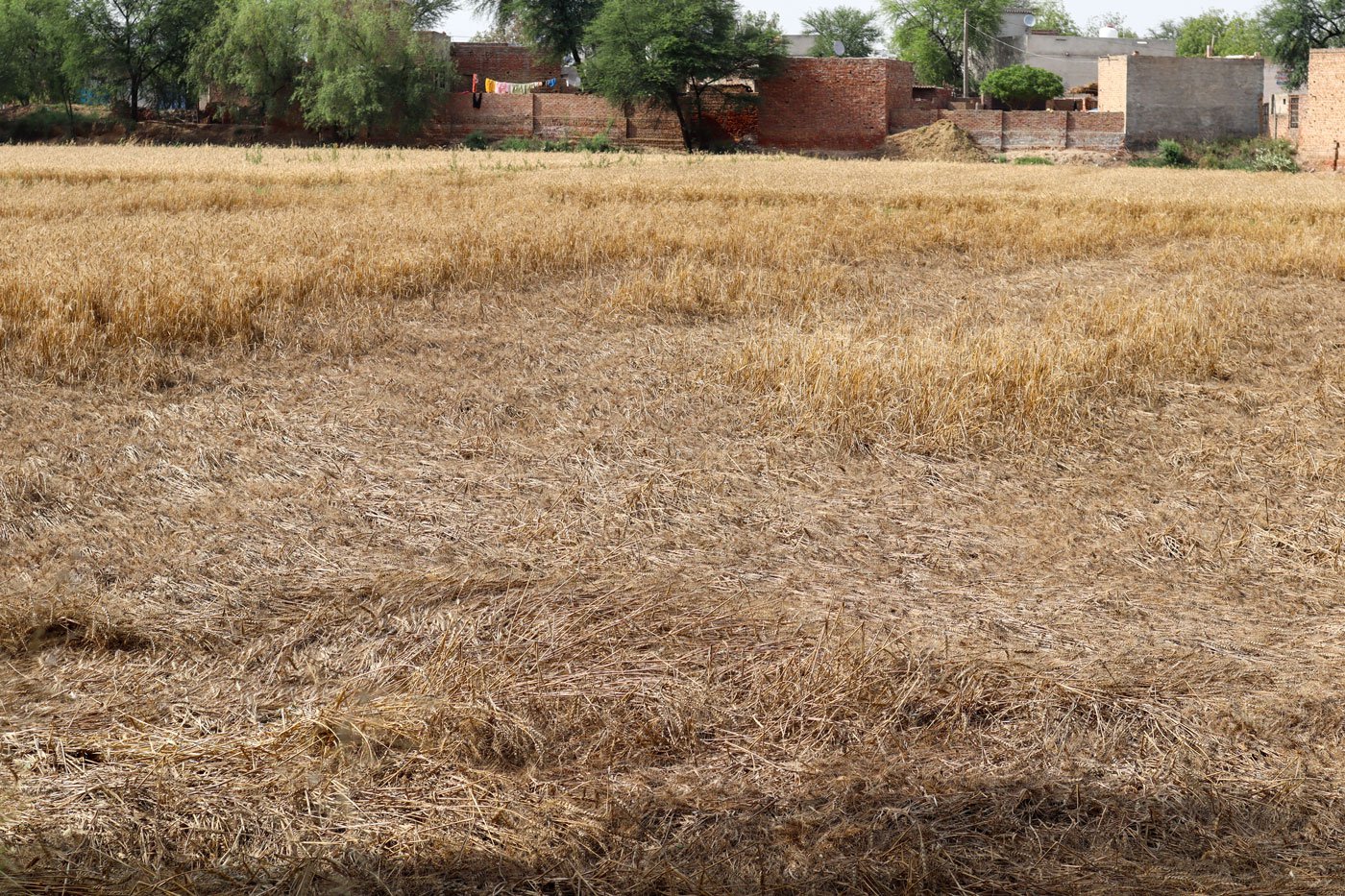
Left: Baldev Kaur’s eldest son Baljinder Singh had taken a loan to rent 10 acres of land. Right: Damaged wheat crop on the 15 acres of farmland cultivated by Baldev Kaur’s family
Wheat is a rabi crop in these parts, sown between October and December. The months of February and March are crucial for the development of the grain when the kernel starts accumulating starch and protein.
Between March 24 and 30, Punjab received 33.8 mm of rain, as against the monthly normal of 22.2 mm for March, according to the India Meteorological Department, Chandigarh. Nearly 30 mm of rain was recorded on March 24 alone, as per data compiled by the Punjab Agricultural University, Ludhiana.
While Baljinder knew the unseasonal rain and hail were a body blow to their crop, the damage to the house, which the family had constructed over the years, was an additional tragedy.
“Whenever I come from outside, just looking at our house fills my heart with worry. Ji ghabranda hai [I feel anxious],” Baldev Kaur said.
The family estimated their farm losses at over Rs. 6 lakh. Where an acre yields 60 mann (a mann is 37 kg) of wheat, they would now harvest 20 mann per acre. The rebuilding of the house would be an additional expenditure, and an urgent one as summer set in.
“ Kudrat karke [It's all because of nature],” said Baljinder.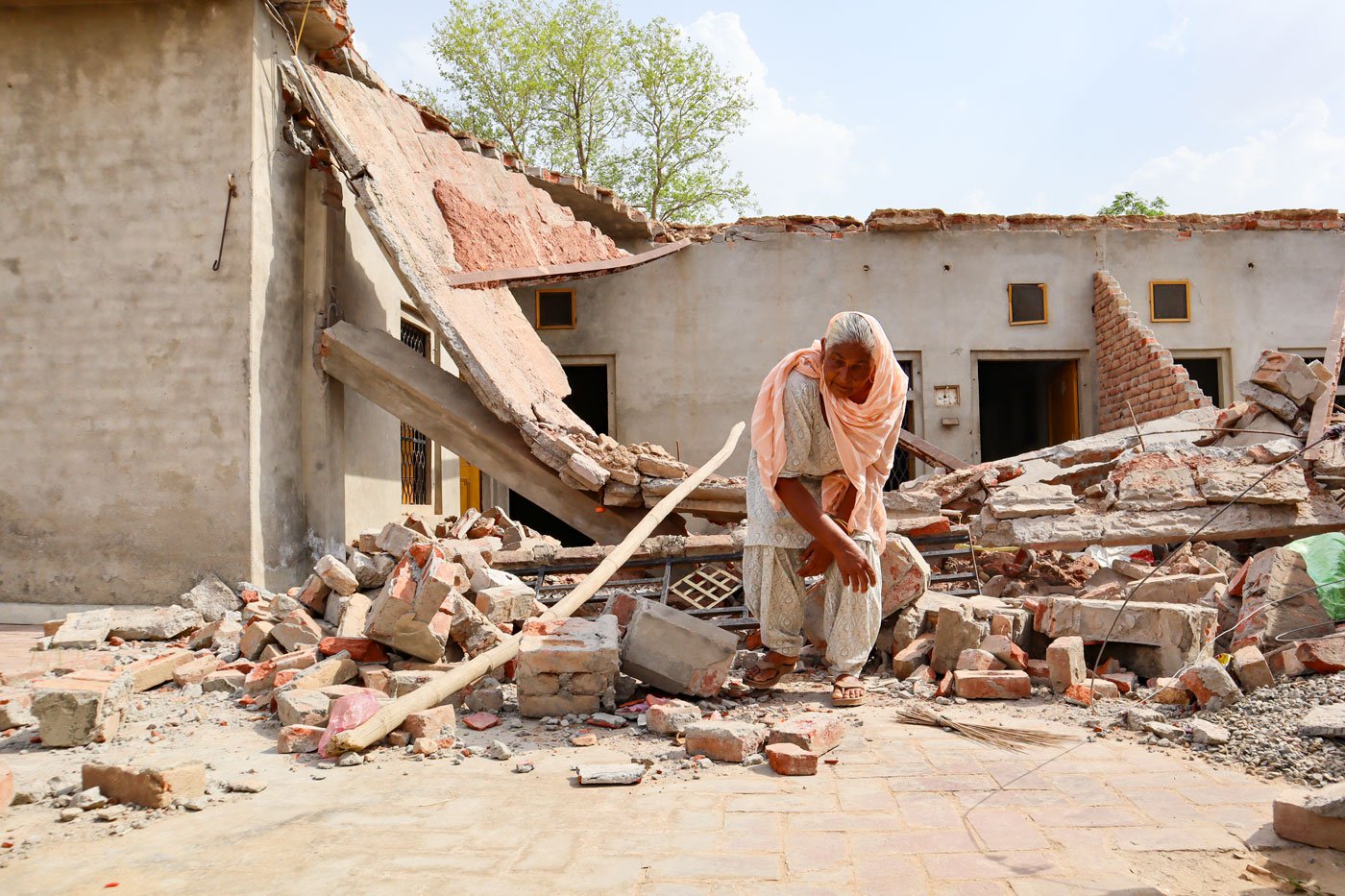
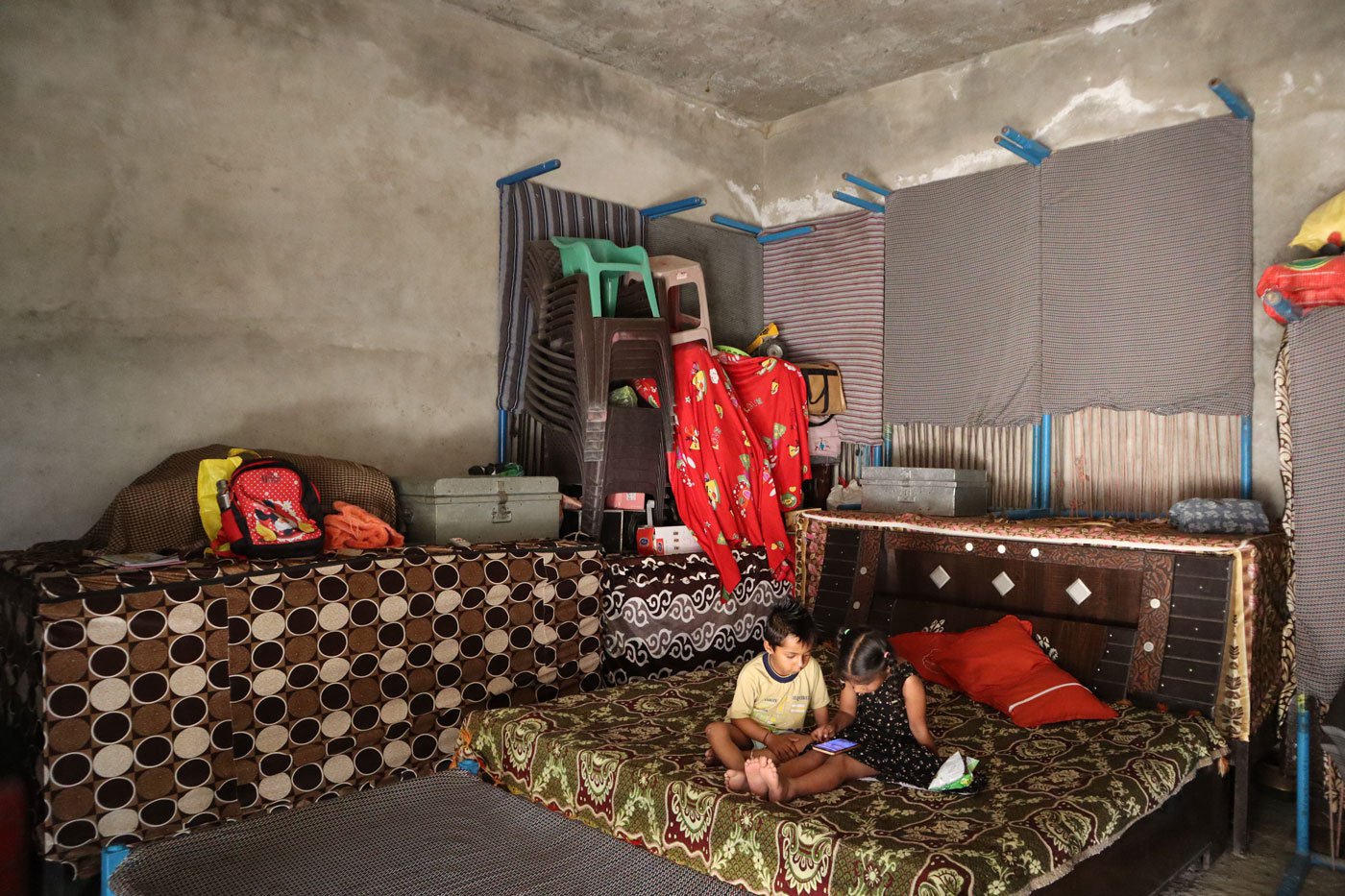
Left: Baldev Kaur picking her way through the rubble of her ancestral home. Right: The family shifted all their belongings to the room that was not destroyed by the untimely rains in March 2023
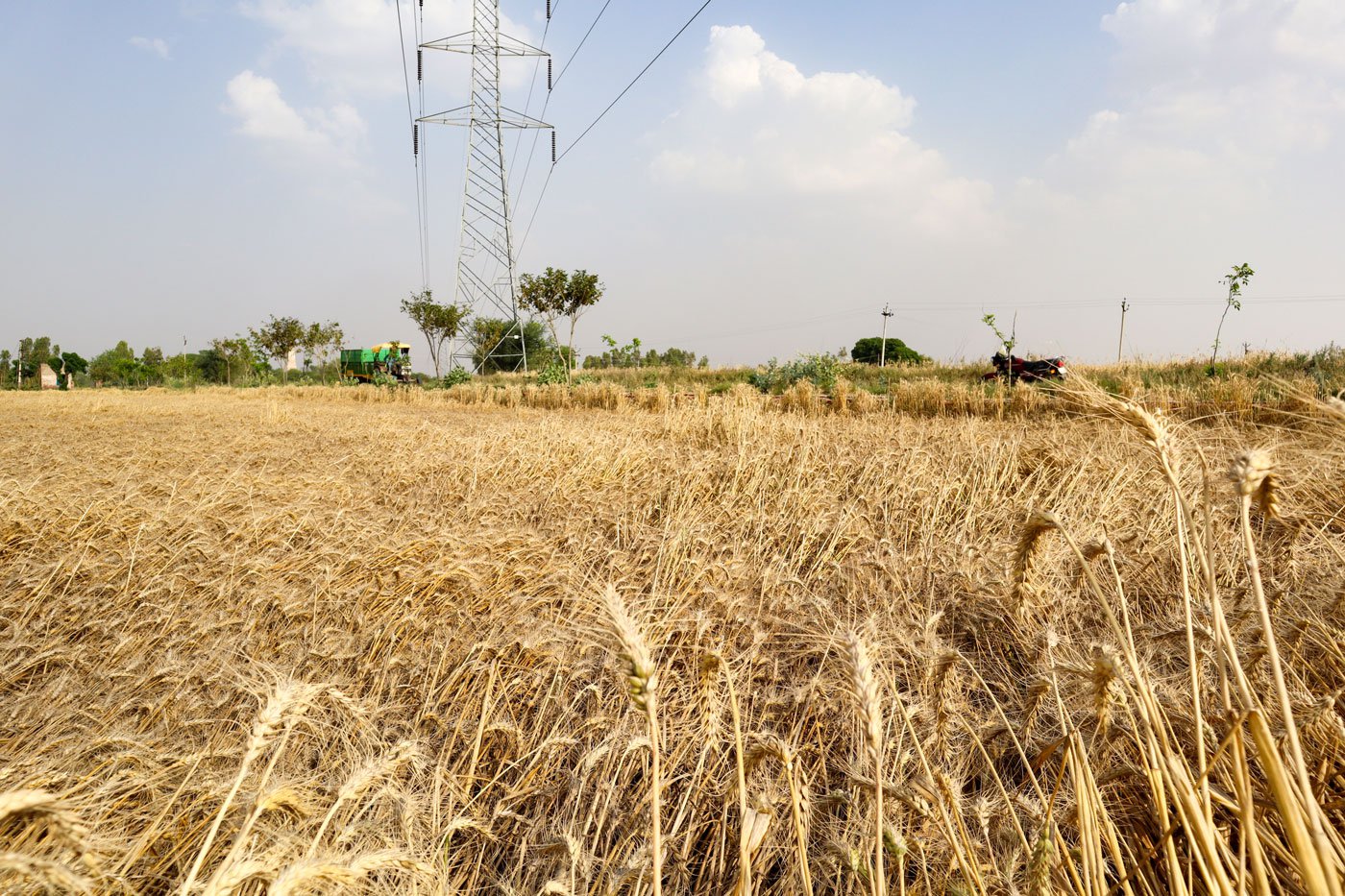
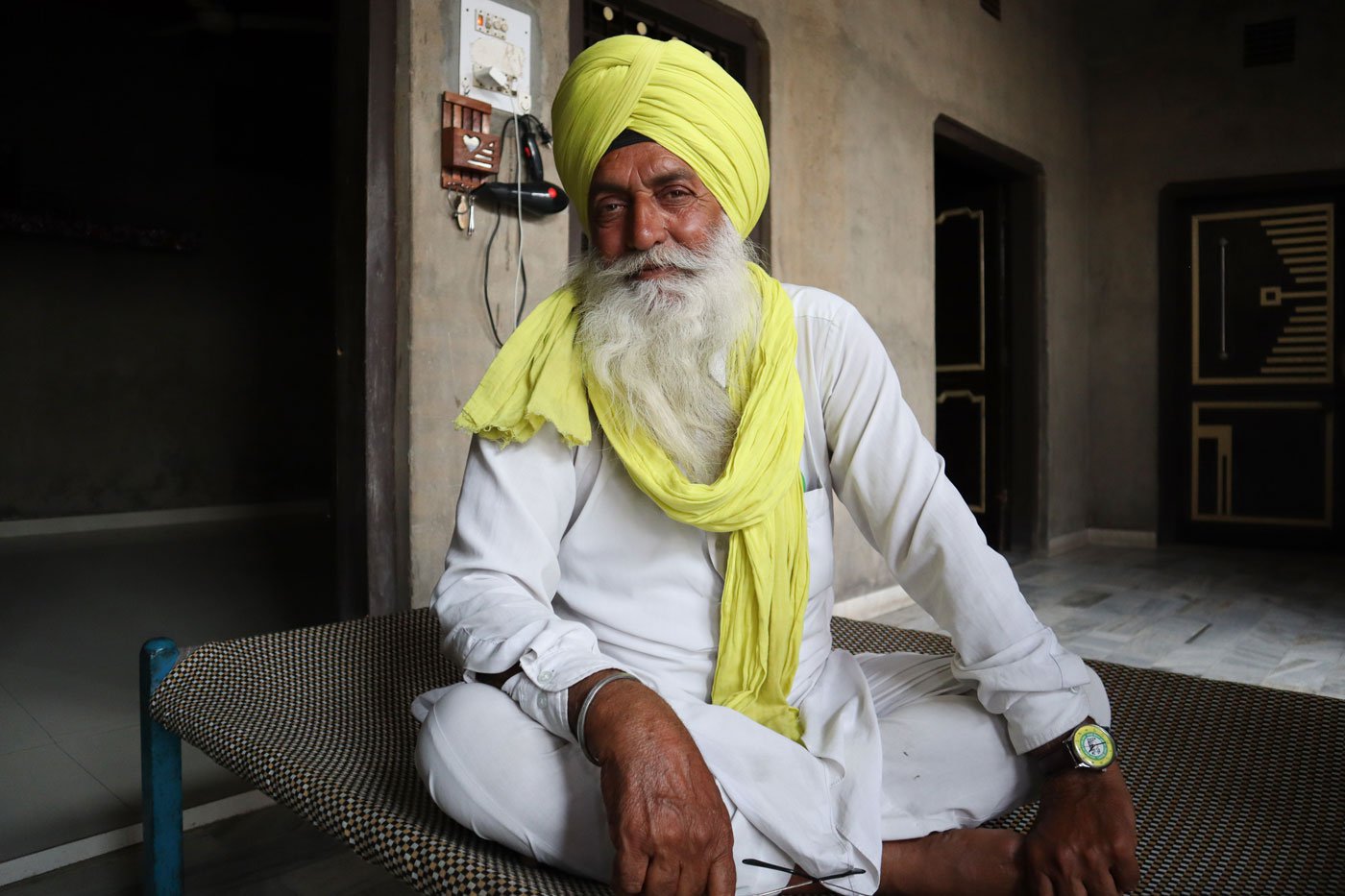
Left: Farmland in Bhaliana village, destroyed by the changing climate. Right: Gurbakt Singh is an activist of the Bhartiya Kisan Union (Ekta-Ugrahan). At his home in Bhaliana
Unpredictable climate patterns were a source of fear for farmers, said Gurbhakt Singh, 64, also of Bhalaiana village and an activist of the Bhartiya Kisan Union (Ekta-Ugrahan). “It is happening because of the wrong policies of the government. If the government fixes a rate for other crops, then we’ll grow those as well, instead of water-intensive crops such as paddy,” he said.
Among the major demands of the Samyukt Kisan Morcha, an umbrella body of farm unions, is a law assuring a minimum support price (MSP) for all crops. Farm unions in Punjab held a demonstration in Delhi in March 2023 to press for such a law.
Gurbhakt’s youngest son, Lakhwinder Singh, said that along with their crop, the turi, a dry cattle fodder made from wheat stubble, was also damaged. Gurbhakt Singh’s family suffered a loss of Rs. 6 lakh to Rs. 7 lakh. They too have a Rs. 7 lakh loan taken from an arthiya at an interest rate of Rs. 1.5 on every Rs. 100 per crop season. A previous loan of Rs. 12 lakh was taken from the bank after mortgaging the family’s landholding, at an interest rate of 9 per cent.
They had hoped to clear some outstandings with earnings from the rabi crop, but that was now impossible. “The hail was the size of a pendu ber [Indian jujube],” Gurbhakt said.*****
When PARI met Boota Singh, 28, of Buttar Bakhua village in April 2023, he was trying to cope with severe insomnia brought on by untimely and excessive rain.
A farmer from Gidderbaha block in Sri Muktsar Sahib district, he has with seven acres of family-owned land and has taken another 38 acres on lease to cultivate wheat. All 45 acres were now inundated, along with at least 200 acres of low-lying farmland in the village. Boota Singh had a loan of Rs. 18 lakh, taken from an arthiya, to be repaid at an interest rate of Rs. 1.5 for every Rs. 100.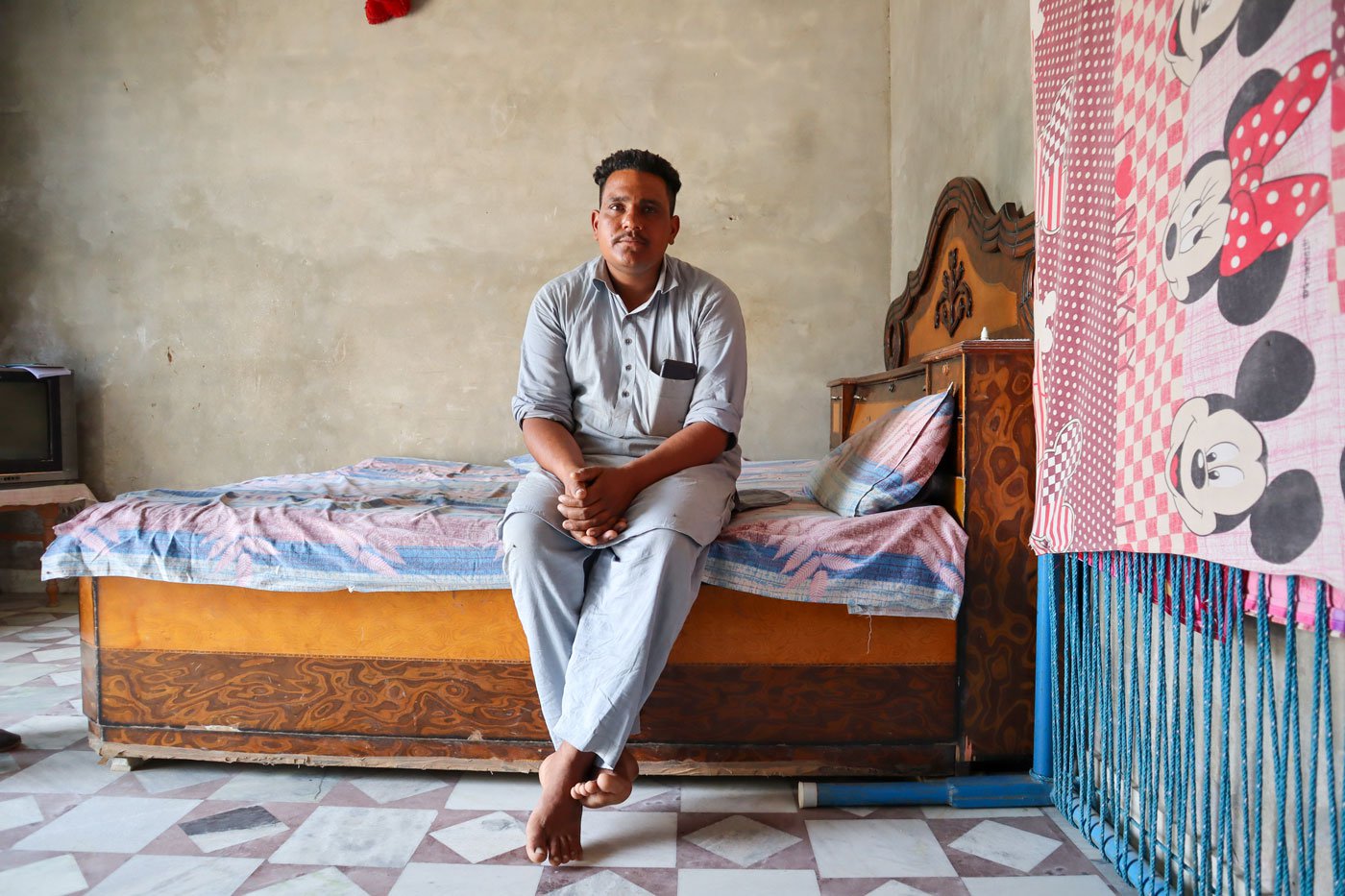
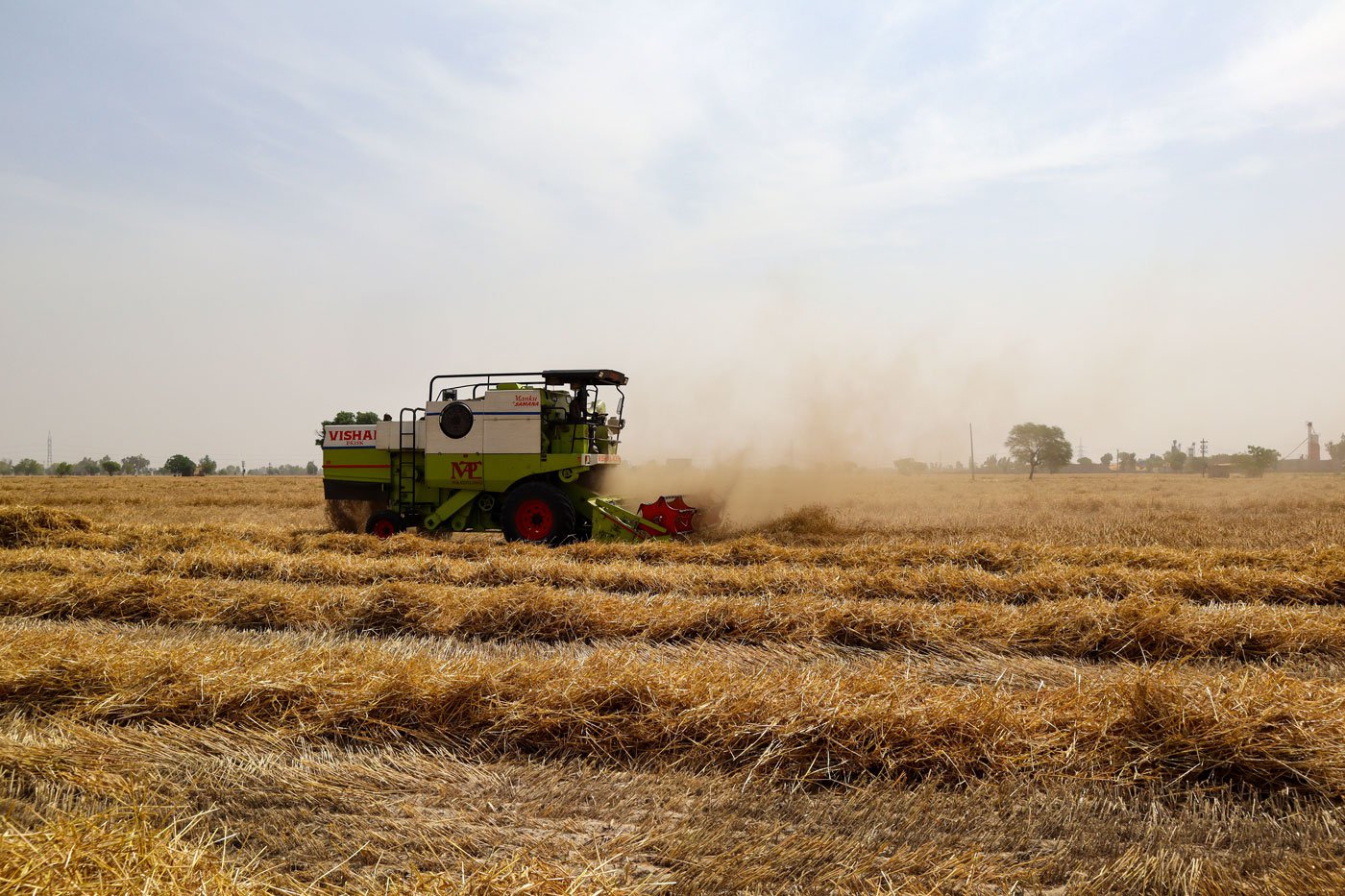
Left: Adding to his seven acres of family-owned farmland, Boota Singh, had taken another 38 acres on lease to cultivate wheat. All 45 acres were inundated, along with at least 200 acres of low-lying farmland in the village. Right: Dried wheat fields being harvested using a harvester machine in Buttar Bakhua village. The rent for the mechanical harvester is Rs. 1,300 per acre for erect crop and Rs. 2,000 per acre if the crop is bent over
His family of six, including his parents, wife and two children, depend on their agricultural income.
“We hoped that with the days getting hotter, the field would dry, and we would be able to harvest the crop,” he said. The mechanical harvester cannot be operated on a soggy field. However, by the time the fields dried, much of the crop was destroyed.
It is also more expensive to harvest a flattened crop—rent for the mechanical harvester is Rs. 1,300 per acre for erect crop, and Rs. 2,000 per acre if the crop is bent over.
These stressors were keeping Boota awake at night. On April 17, he visited a doctor in Gidderbaha who told him he had high blood pressure and prescribed him medication.
Words such as ‘tension’ and ‘depression’ were common among the region’s farmers.
“ Depression tah paenda hi hai. Upset vala kaam hunda hai [One does get depressed and upset],” said Gurpal Singh, 40, of Buttar Bakhua village, while pumping out rainwater from his six-acre farmland. If they save nothing after every six-month season of farming, the effect on their mental health is natural, Gurpal said.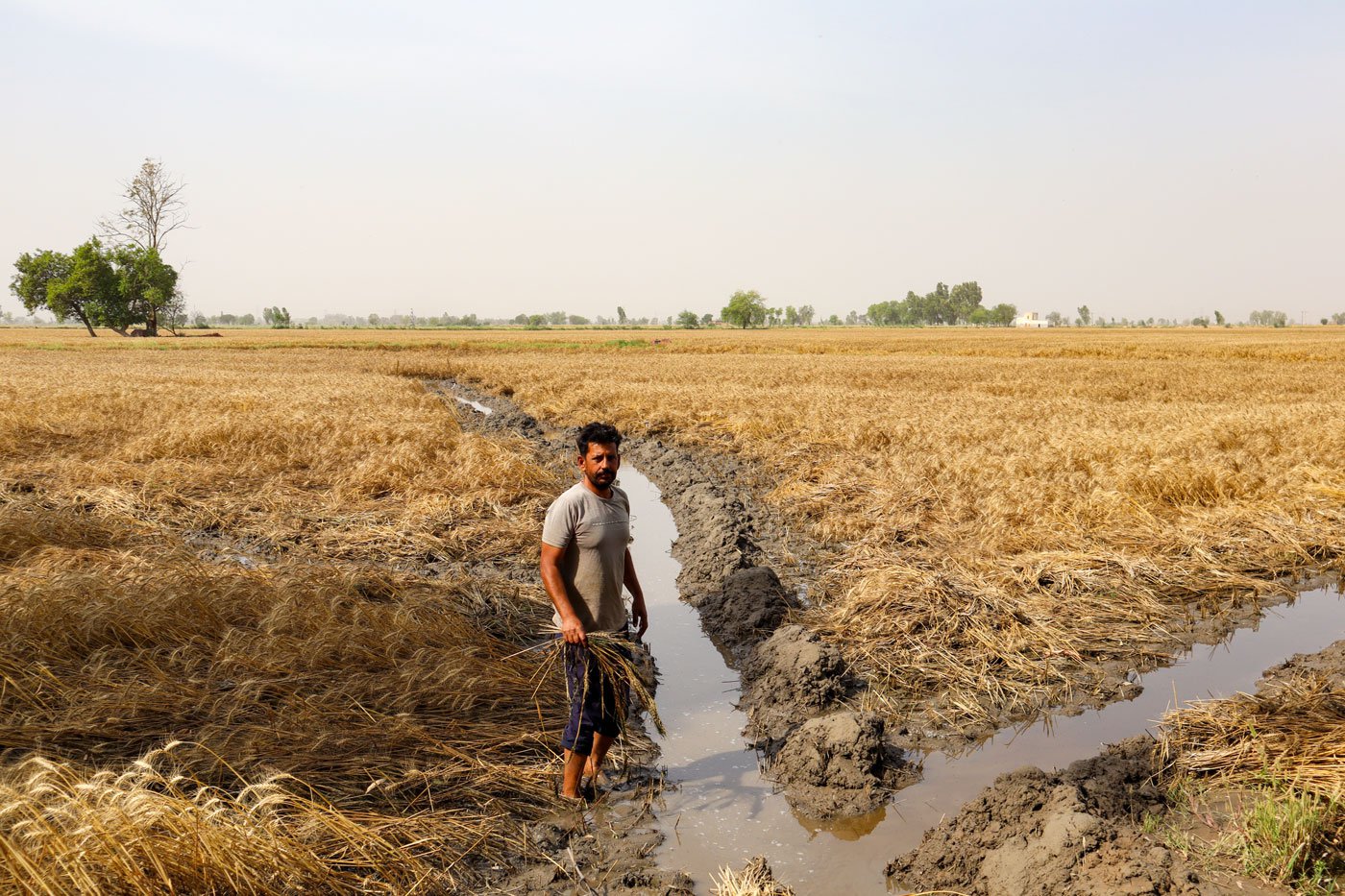
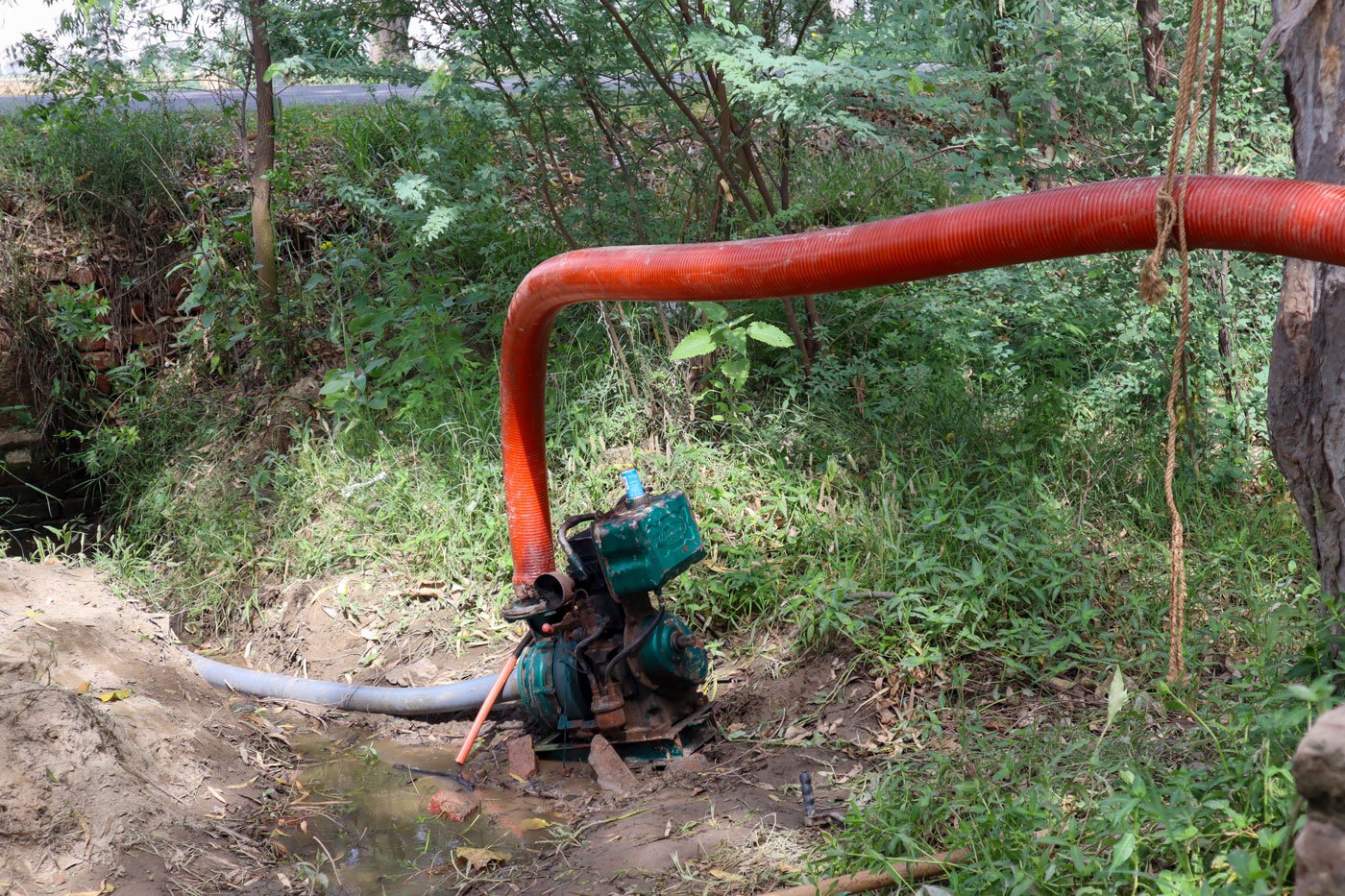
Left: Gurpal Singh, 40, of Buttar Bakhua village pumping out water from his farmland. Right: The water pump used on the Gurpal’s farmland
Kiranjit Kaur, 27, an activist who set up the Kisan Mazdoor Khudkushi Peedit Parivar Committee, an organisation to support families of farm suicide victims in Punjab, said a growing number of farmers reported experiencing anxiety. “It is a complete loss for a small-scale farmer, who owns not more than 5 acres of land if the crop fails. As such farmers and their families are left with interest to pay on loans taken, it affects their mental health seriously. That is why we see suicides among farmers.” Kiranjit said there is a need for mental health support for farmers and their families, to prevent them from being drawn to substance abuse or drastic measures.
Some farmers had experienced the vagaries of the climate in previous harvest seasons too. In September 2022, paddy was harvested with much difficulty due to the untimely rains in September, said Boota. The previous rabi season had been too hot, causing the wheat grain to shrink.
For this current season, he said, “ Waddhi di aas ghat hai [The hope of harvesting the crop is low]. Even if we manage to harvest it in coming days, no one will buy it since the grain will be blackened by then.”
Dr. Prabhyjot Kaur Sidhu, principal scientist (agrometeorology) at Punjab Agricultural University, said normal or below normal temperatures in February and March were considered good for the wheat grain.
While the 2022 rabi season saw lower wheat production due to higher temperatures in these months, the rainfall in March and April 2023 along with winds at speeds of 30 km/hr - 40 km/hr led to low productivity again. “When it rains with high velocity winds, the wheat plants fall down, a process called lodging. The plant stands back with the increasing temperature, but that failed to happen in April,” said Dr. Sidhu. “That’s why the grain could not develop, and the harvesting couldn’t be carried out in April. This again led to low wheat productivity. In some districts of Punjab where it rained but without winds the productivity has been better.”
The untimely rain in late March should be seen as an extreme weather episode, according to Dr. Sidhu.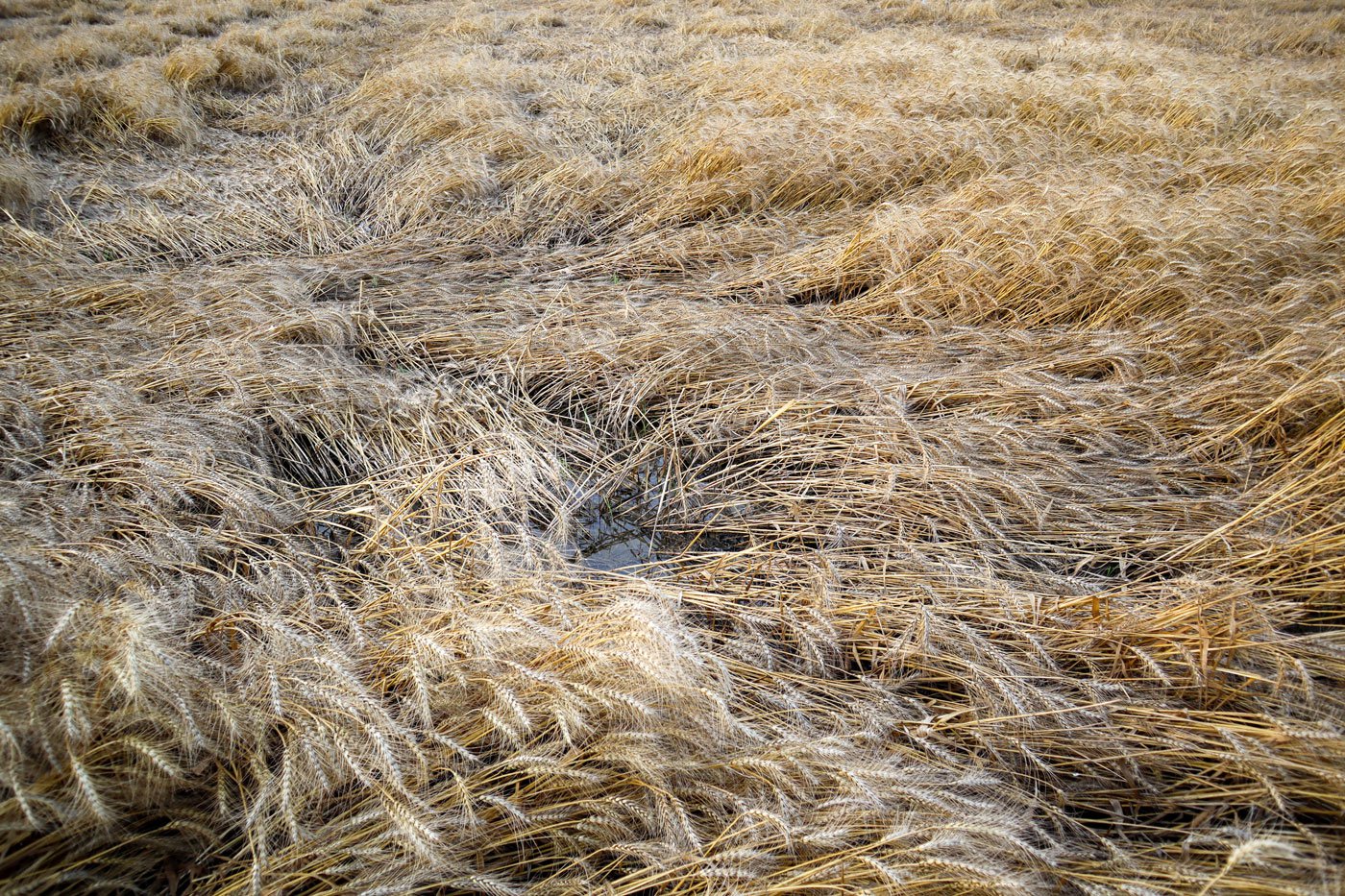
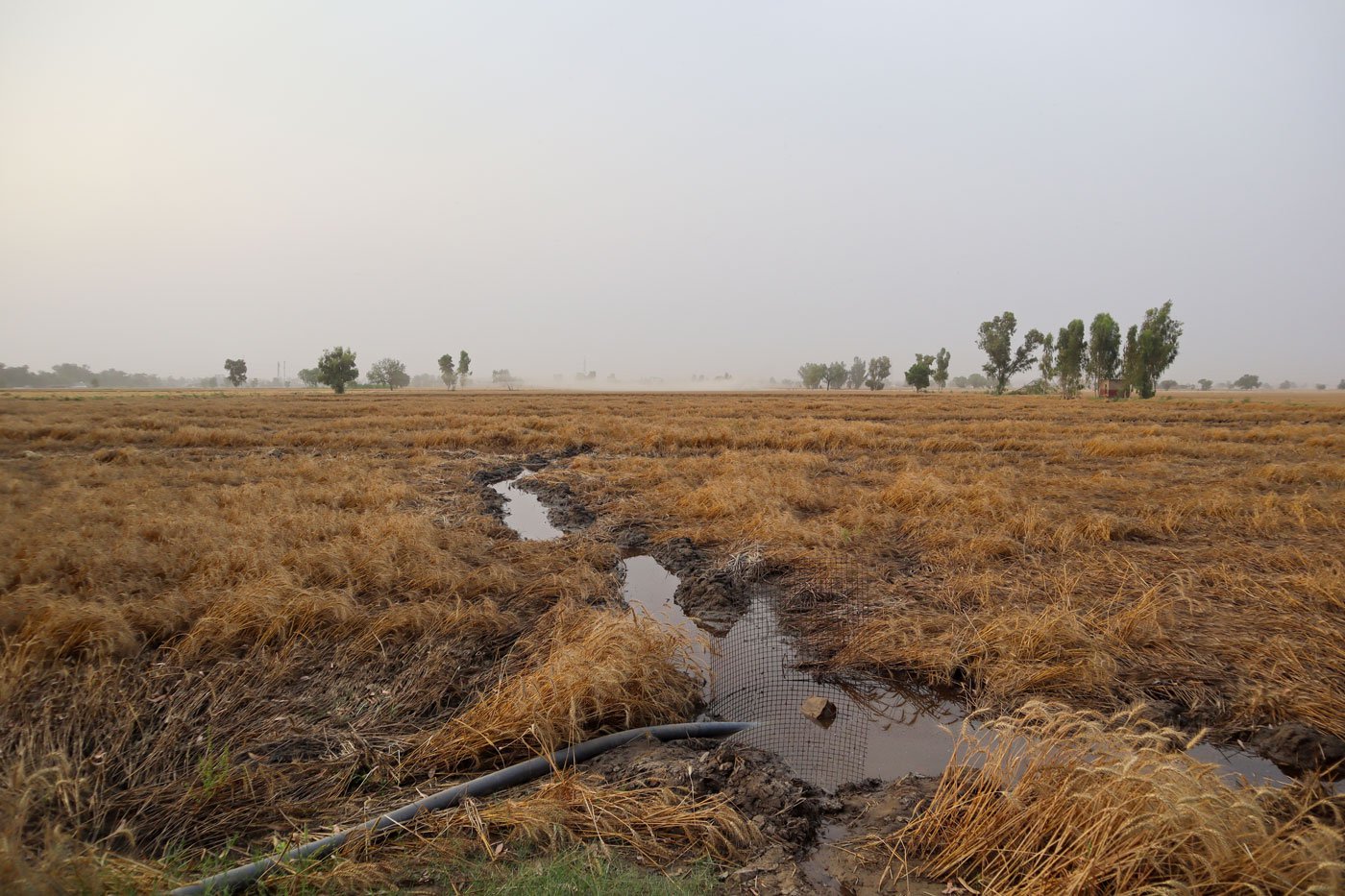
Damage caused in the farmlands of Buttar Bakhua. The wheat crops were flattened due to heavy winds and rainfall, and the water remained stagnant in the field for months
By May, Boota managed to harvest 20 mann (or 7.4 quintal) of wheat per acre of land, against an expected 20-25 quintals. Gurbhakt Singh’s yield was between 20 mann and 40 mann per acre, while Baljinder Singh recorded 25 mann to 28 mann per acre.
Depending on the quality of the grain, Boota received Rs. 1,400 per quintal to Rs. 2,000 per quintal, against the MSP of Rs. 2,125 per quintal for wheat in 2023 as per the Food Corporation of India . Gurbhakt and Baljinder sold their wheat at the MSP.
This was following a ‘value cut’ set by the ministry of consumer affairs, food and public distribution after the crop damage from the rains. It varied between Rs. 5.31 to Rs. 31.87 per quintal on grain that was shrivelled and broken. In addition, a value cut of Rs. 5.31 per quintal was imposed on grains that had lost their lustre.
The Punjab government announced a relief of Rs. 15,000 per acre for farmers who had suffered damage to at least 75% of the crop. For losses between 33% to 75% of the crop, farmers were given Rs. 6,800 per acre.
Boota received Rs. 2 lakh as compensation from the government. “It is a slow process. I am yet to receive the full compensation,” he said. According to him, he should be compensated Rs. 7 lakh so as to repay the loan.
Gurbhakt and Baljinder were yet to receive any compensation.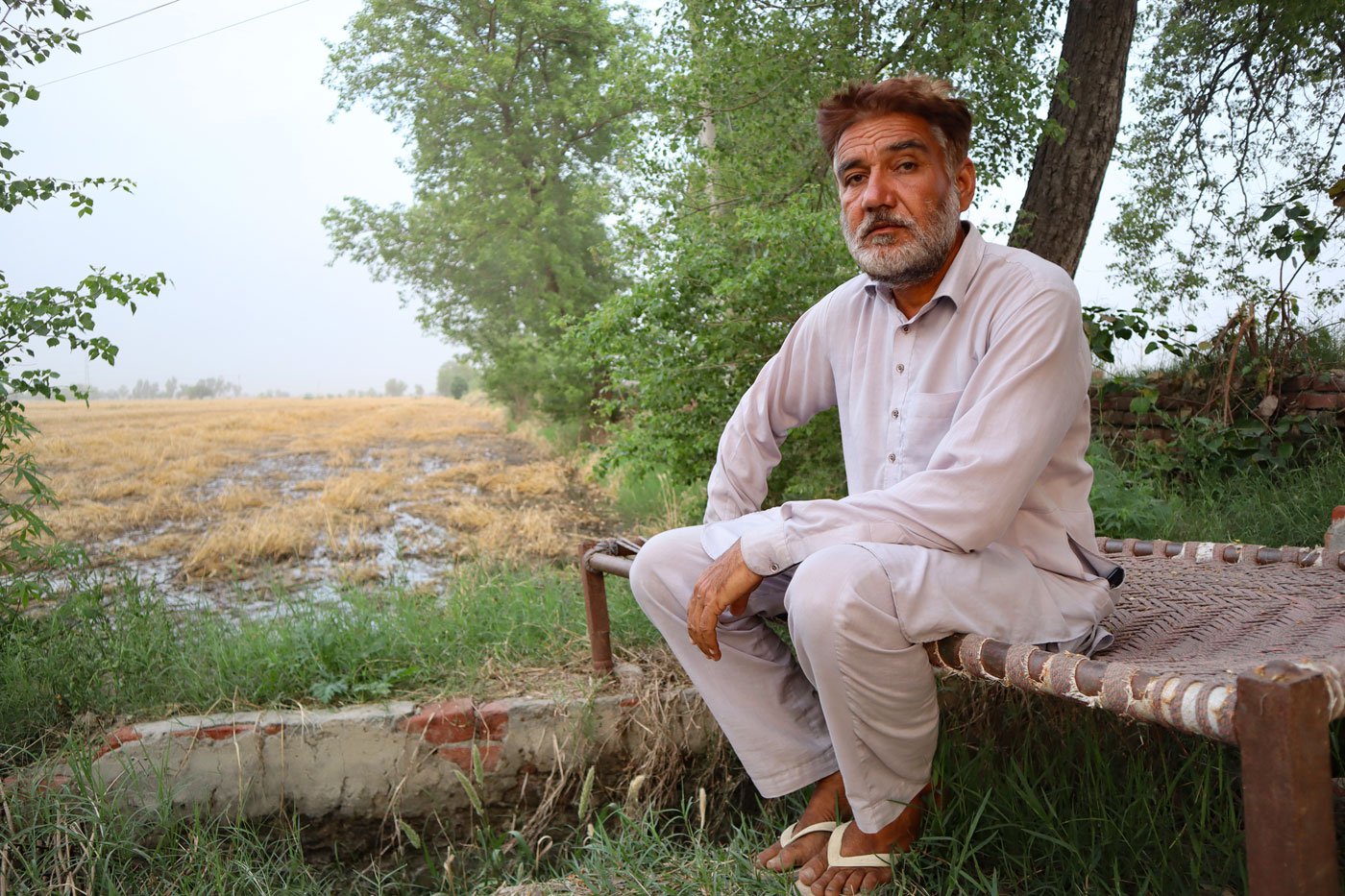
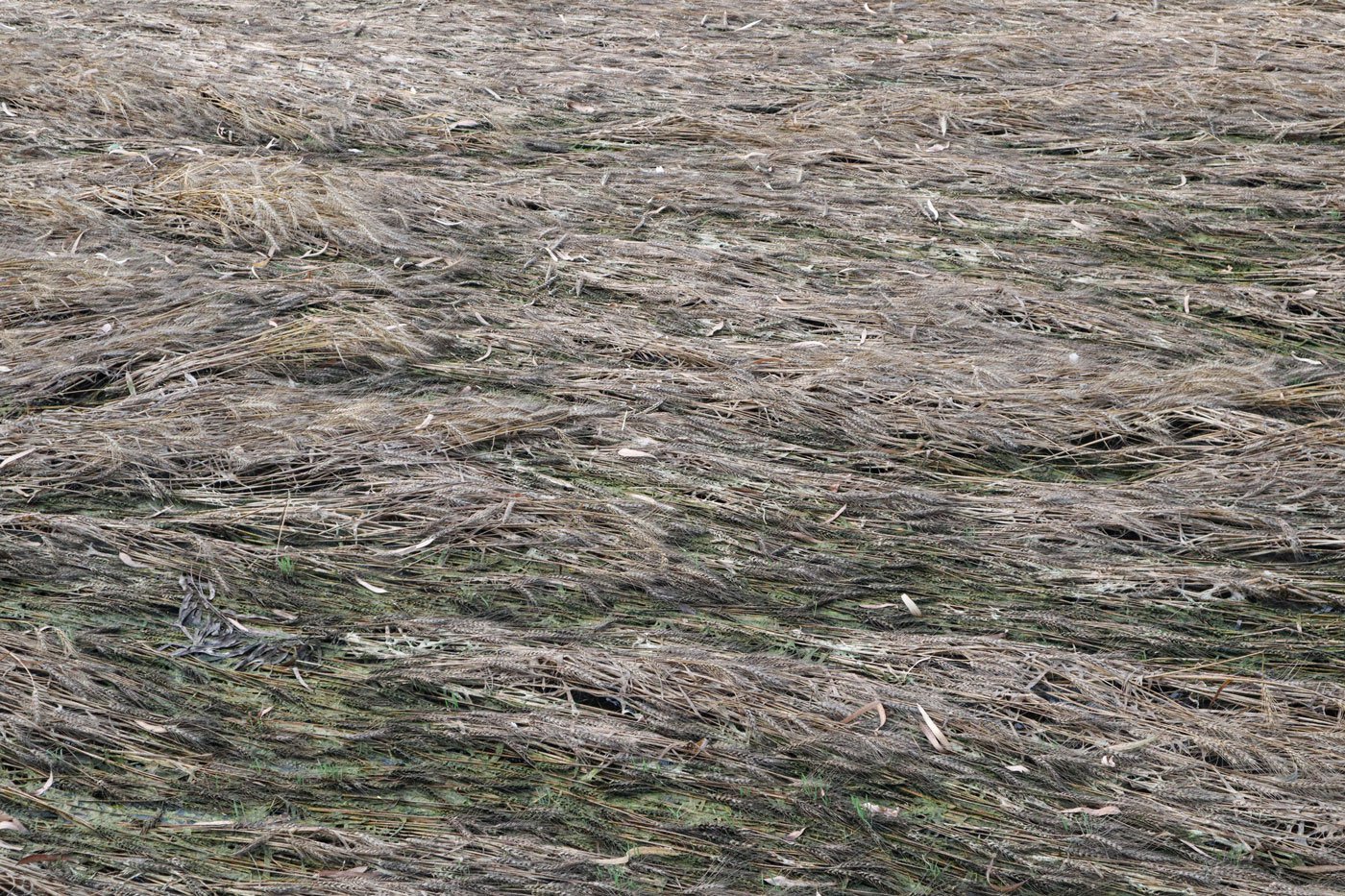
Left: Baldev Singh owns 15 acres of land. Right: After the long spell of excess water, his fields with wheat turned black and brown with fungus and rotted. Ploughing it would release a stench that would make people fall sick, he said
An owner of 15 acres of land, Baldev Singh, 64, of Buttar Bakhua village had also taken a loan of Rs. 5 lakh from an arthiya to lease 9 acres of land. He pumped out water for nearly a month, burning 15 litres of diesel everyday.
After the long spell of inundation, Baldev Singh’s wheat fields turned black and brown, with a fungus from the rotting crop. Ploughing it would release a stench that would make people fall sick, he said.
“ Maatam varga mahaul si [the atmosphere at home is like a funeral],” Baldev said about his family of 10. The harvest festival of Baisakhi which marks the beginning of a new year went by without any celebrations.
To Baldev, the crop damage felt like he himself had been uprooted. “I couldn’t leave the land like this,” he said. “It’s not as if our children are finding jobs after completing their education.” These circumstances drive farmers to take their lives or leave the country, he said.
For now, Baldev Singh has reached out to farmers in the extended family for support. He has taken turi from them to feed his livestock, and also grain for his family.
“We are zamindars only in name,” he said.
